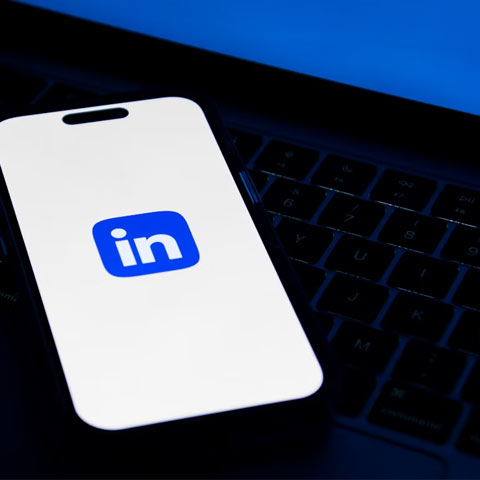How to Create Brand Advocates - 5 Ways


Truly engaged customer advocates can be a brand’s most influential marketing force. The best part? They don’t cost a penny.
The payoffs of customer advocacy come in the form of lowered acquisition costs, increased demand for your product or service, multiplied social capital and a sustainable marketing model. Indeed, fan engagement platform SocialToaster reports that the average social media user is connected to 400+ friends and family. (Do the math and you’ll see that 10 advocates gives you a reach of 4,000, 100 advocates gives you a reach of 40,000, and so on.) Simply put, as the number of advocates in your corner climbs, “so too does your potential organic reach.”
What’s more, 92% of individuals trust word-of-mouth recommendations, making this one of the most trust-rich forms of advertising - and 76% of individuals surveyed say they’re more likely to trust content shared by “normal” people than content shared by brands.
That’s all great, but what drives this kind of devotion to a brand? What turns customers into often-fanatical advocates willing to promote products or services to their networks without “any incentive other than their love for the brand?” Even more - assuming you already have a top-quality product or service to offer - what should you do to attract those advocates and essentially put them to work?
1. Establish an emotional connection
According to Milwaukee’s BizTimes, companies with a cult-like following such as Harley-Davidson - which sells a lifestyle as much as a form of transportation - are most successful at creating highly engaged brand communities. A big part of Harley-Davidson’s appeal grows from the emotional attachment customers feel to that lifestyle, with messaging “reinforced by group rides, branded jackets and the brand’s association with values like freedom, independence and self-expression.”
All of which creates brand advocacy. As Felicia Miller, associate professor of marketing at Marquette University, tells the publication, “‘It’s about a shared experience and it’s on a Harley.’”
Even if you don’t sell a biker lifestyle, you can still lean into the existing emotional appeal of your brand. Who is your audience? What kind of attachment do they feel to you - and how can you use tactics like events, online groups and extended branding initiatives to start building a community?
2. Determine the 4 Ds of difference
Although the cult of Harley developed at least somewhat organically, there are steps companies can take to create cult-like cache. Speaking at The Gathering, an annual Canadian business conference held in February, Douglas Atkins, former head of community at Airbnb and author of the book The Culting of Brands, outlined four methods that beloved brands use to attract and deploy advocates. As reported in The Globe and Mail, Atkins pointed to Harley-Davidson and other cult brands such as Apple and Starbucks as being especially good at engaging in what he calls the “four Ds of difference” - tactics that create a sense of community and belonging:
- Determine your franchise’s sense of difference: for brands to truly know who they are, they need to define what they aren’t and not try to please everyone.
- Declare your cult’s difference with doctrine and language. Once you’ve figured out your purpose, you need to actively declare it so that people recognise it and join.
- Demarcate your cult from the outside world: logos, values, sounds. People can tell one brand from the other through visual and aural cues.
- Demonise the other: “Us versus them.” This kind of stance (think Apple versus Microsoft) creates solidarity in the community. The “other” becomes a threat and bands the followers together in opposition.
Business Insider seconds the idea of establishing a sense of community and of belonging, noting that Apple has been exceptional at creating “hype around its release days not by pushing exclusivity, but inclusiveness.”
3. Give your customers exactly what they expect
To elaborate on the third “D”, demarcating your “cult” from the outside world: walk into any Apple store from London to Tokyo to New York and you’ll see that everything is pretty much the same. In fact, Apple trademarked its store layout in 2013. Everything from the sleek, open floor plan to the long wooden tables and the phones and watches arranged around the periphery is “a clue,” as Atlas Obscura observes, “that this is not supposed to be an individual experience.”
SoulCycle delivers a similar cult-like experience in that fans know what to expect the second they walk through the door. That’s all by design, co-founder Elizabeth Cutler explains in Entrepreneur, “From the grapefruit smell, to the mantras on the wall and the upbeat positive energy you feel when you walk in,” every detail is intentional and consistent.
According to Entrepreneur, “If your brand is offering mixed messaging, customers tend to get confused and it prevents them from relating. Everything you put out there should have a consistent personality, design and aesthetic.”
Do it right, and the result is a “perfect branding storm,” writes the author. “I went in wanting to hate it but, after the first song, I knew I was hooked. I drank the SoulCycle Kool-Aid and there was no going back.”
4. Respond to feedback
It seems obvious, but don’t ignore the ABCs of good customer service - think of it as a low-hanging fruit whose nutrients are essential to survival. A great customer experience engenders positive feelings, which in turn drives brand advocacy. Plus, an emotional connection combined with a good consumer experience builds trust, which drives business.
Bottom line: If you solicit feedback from customers (and every business technically does in the era of online reviews) then you need to respond to that feedback. If a customer leaves a bad review, take action. As noted in a previous post, responding to reviews gives you the benefit of publicly demonstrating your brand’s responsiveness and customer service. Even so, Yext research reveals that just 40% of businesses respond to reviews - proof that there’s significant opportunity in providing an exceptional customer experience.
5. Reward loyal customers… or maybe don’t
The jury is still out on whether or not giving loyal customers rewards, discounts or other forms of payment is a winning strategy. Pointing to studies showing that referred customers are more valuable than those acquired through other means, Huffington Post suggests developing a referral programme. Another proponent of rewards is Fenty Beauty, which for Mother’s Day last year solicited via Twitter photos and stories of customers’ moms wearing the brand’s makeup.
Arguing against the practice is Bill Lee, author of the book The Hidden Wealth of Customers: Realising the Untapped Value of Your Most Important Asset and this Harvard Business Review article, in which he recommends not heading down the giveaway “slippery slope.” (“It’s not good for them, or for your business”). Instead, Lee favours other customer-engagement opportunities, including offering key consumers positions on your advisory boards or executive forums.
In the end, it’s a matter of reading your audience and making a judgement call. If giving away free makeup or tickets to a sporting event consistently delivers advocates, have at it! Either way, keep your eye fixed on Lee’s starting point when it comes to fostering advocacy and preserve the integrity of that advocacy - product and service excellence. “Deliver what you promise and promptly fix what goes wrong,” he says. “You can’t create or enlist a customer advocate or build a customer-based sales force without the solid foundation of an ongoing, responsive delivery and service relationship."
Want more like this?
Want more like this?
Insight delivered to your inbox
Keep up to date with our free email. Hand picked whitepapers and posts from our blog, as well as exclusive videos and webinar invitations keep our Users one step ahead.
By clicking 'SIGN UP', you agree to our Terms of Use and Privacy Policy


By clicking 'SIGN UP', you agree to our Terms of Use and Privacy Policy
Other content you may be interested in
Categories

Want more like this?


Want more like this?
Insight delivered to your inbox
Keep up to date with our free email. Hand picked whitepapers and posts from our blog, as well as exclusive videos and webinar invitations keep our Users one step ahead.
By clicking 'SIGN UP', you agree to our Terms of Use and Privacy Policy









